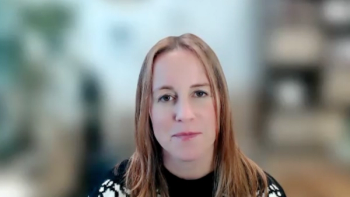
Cost Implications of Modulating IgA Nephropathy Disease Course
Panelists discuss how disease-modifying therapies for immunoglobulin A (IgA) nephropathy, though initially more expensive than symptomatic treatments, offer substantial long-term cost benefits by preventing progression to kidney failure and avoiding the enormous expenses of dialysis and transplantation.
Episodes in this series

Economic Impact of Disease-Modifying vs Symptomatic Therapies in IgA Nephropathy
Paradigm Shift in Treatment Economics
Disease-modifying therapies targeting the underlying pathogenesis of IgA nephropathy offer significant economic advantages over traditional approaches that merely address downstream effects:
Direct Cost Implications
- Reduced progression to end-stage kidney disease: Disease modification potentially decreases lifetime incidence of kidney failure by 20%-40%, substantially reducing the $90,000+ annual cost of dialysis
- Decreased hospitalization frequency: Patients with effectively modulated disease experience fewer acute complications requiring inpatient care
- Lower cumulative medication expenditure: Despite higher initial costs of targeted therapies, reduced need for multiple supportive medications and management of complications may yield long-term savings
- Avoided transplantation costs: Each avoided or delayed transplant represents $150,000-$250,000 in immediate savings plus $20,000+ annually in immunosuppression costs
Health Care Utilization Benefits
- Shifted care utilization pattern: From crisis management and complication treatment to scheduled disease monitoring
- Reduced subspecialty referrals: Fewer consultations for managing complications of progressive kidney disease
- Optimized timing of interventions: Proper disease control reduces emergency interventions with their associated premium costs
- Decreased diagnostic testing burden: Less need for frequent assessment of complications and comorbidities
Long-term Economic Advantages
- Extended workforce participation: Each additional year of employment represents approximately $50,000-$75,000 in societal productivity per patient
- Reduced disability claims: Potential 30%-50% reduction in disability benefit utilization
- Preserved health insurance eligibility: Patients maintain private insurance coverage longer, reducing public health care expenditure
- Decreased caregiver economic impact: Estimated $15,000-$25,000 annual savings in informal care costs
Value-Based Care Alignment
- Improved cost-effectiveness ratios: Disease-modifying therapies show better lifetime cost-effectiveness despite higher up-front costs
- Quality-adjusted life year gains: Additional quality-adjusted life years at lower incremental cost compared with symptom management
- Improved patient-reported outcomes: Enhanced productivity and quality of life represent economic value beyond direct health care costs
- Health system resource optimization: Resources shifted from high-cost dialysis care to prevention and early intervention
The economic proposition of disease-modifying therapies represents a fundamental shift from the traditional cost-accumulation model of chronic kidney disease management to an investment model where initial expenditures yield substantial downstream economic returns through disease modification.
Newsletter
Stay ahead of policy, cost, and value—subscribe to AJMC for expert insights at the intersection of clinical care and health economics.














































